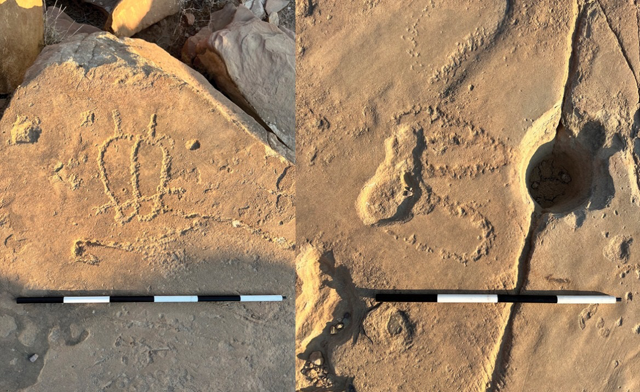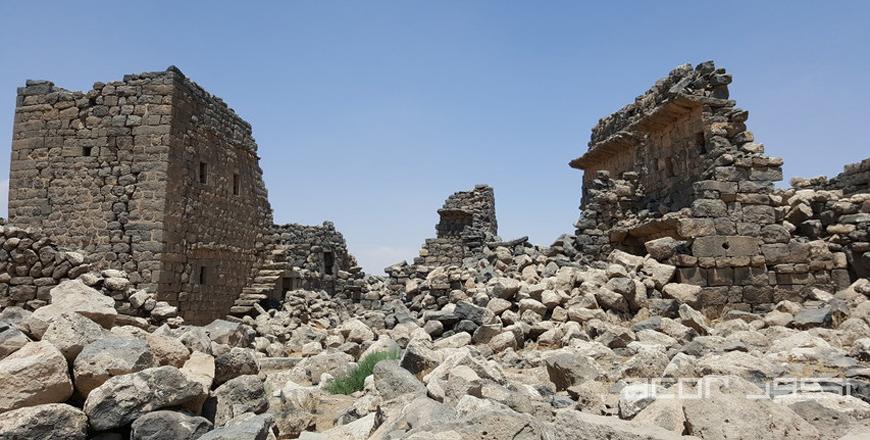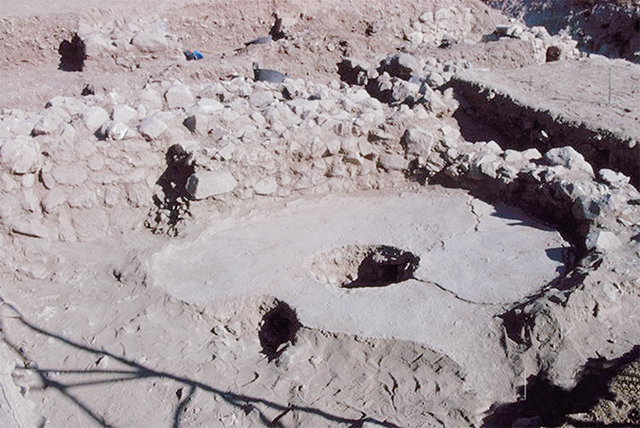You are here
Animal management in Petra hinterland during Neolithic Period
By Saeb Rawashdeh - Sep 05,2024 - Last updated at Sep 30,2024

Petroglyphs from Umm Huwaiwitat near Petra may depict footprints (Photo courtesy of Antiquity Journal)
AMMAN — Umm Huwaiwitat is located near the western end of the Wadi Al Ghurab, approximately 800 metres east of where the wadi spills off the Petra Plateau into the Jordanian Rift Valley. At the top of this precipice lies the Nabataean/Roman settlement and sanctuary of Ras Al Silaysil, while below it is the so-called Pond Temple.
The site has multiple phases of occupation and based on its construction style wall was probably built during the Nabataean/Roman period.
The many walls, building foundations, petroglyphs and other architectural features at Umm Huwaiwitat attest to the natural and cultural importance of this area, as do earlier traces of Neolithic activity and use. Such traces are not evident on the surface but are an essential part of the site’s history.
The team of archaeologists found layers that prove human activity in the vicinity of Umm Huwaiwitat that dates from 6th millennium BC.
“The Brown University Petra Archaeological Project recorded a ‘nearly ubiquitous’ distribution of chipped-stone artefacts dating to the Late Neolithic across much of the area north of Petra, which reflects the magnitude and extent of human activity during that period,” said Daniel Plekhov from Department of Anthropology Portland State University, adding that evidence for Neolithic sites, rather than artefacts, in the Petra region are few, however, though include Beidha, Shkarat Msaied, Baʾja, Sabra and Basta.
The chronology of Beidha is contested, but the prevailing view is that the site was occupied in the Middle Pre-Pottery Neolithic B (8,300—7,200 cal BC), during which time there were at least three discernible phases of occupation, Plekhov elaborating noting that Gary Rollefson has also argued for an additional phase during the Pre-Pottery Neolithic C (6,900—6,300cal BC), on the basis of architectural similarities between Beidha and the settlement of ‘Ain Ghazal, best known for its ritually deposited plaster statues.
“One radiocarbon sample from Beidha also dates to around 5,500BC, though it is often excluded from consideration as it comes from an insecure. The most recent layers of Beidha were destroyed sometime in the first few centuries AD by the construction of ‘Nabataean’ terraces, further complicating efforts to reconstruct the Neolithic chronology of the site,” Plekhov said.
Analysis of that site’s botanical remains has shown the prevalence of emmer wheat and barley, which are likely to have grown on the alluvial terrace below the site.
The presence of cultivated barley and emmer wheat at nearby Neolithic Beidha nevertheless indicates that such by-products were at some point present in the landscape and could have been a useful source of fodder for animals, Plekhov continued, adding that as for faunal remains, caprines dominate the assemblage at Beidha.
Furthermore, precise identification of species at that site was difficult due the absence of cranial remains, but they are most similar to those of ibex or wild goats.
The presence of dense dung deposits at Umm Huwaiwitat provides further detail regarding local forms of animal management during the later Neolithic, the scholar said, adding that taken together, the geomorphological and archaeobotanical evidence suggests that people actively managed the pasturing and foddering of their animals. Though the microstratigraphy indicates that the dung is likely to have been collected from elsewhere and redeposited, it is possible that the animals were penned nearby, since caprines would have been domesticated by Late Neolithic times.
“The Late Neolithic history of the Petra region is much less well-known than the region’s Nabataean/Roman history, not least because the Late Neolithic is elusive in Jordan. Nevertheless, some pockets of activity, such as that identified at Umm Huwaiwitat, provide windows into life in the region at that time. The collection and burning of dung and deposition of ash at Umm Huwaiwitat reflect the importance of animals in local subsistence strategies and perhaps also growing concerns about fuel resources in the later sixth millennium BC,” Plekhov underlined.
Both Beidha and Umm Huwaiwitat provide an insight into animal management, land use and human occupation of the wider Petra region.
“Agriculture was but one of Umm Huwaiwitat’s many uses through time, and perhaps only a recent one. The dense and organically rich soils that developed as a result of occupation during the Late Neolithic may have attracted later use of the site, as evidenced by the construction of wall UH8 in the fourth millennium BC,” Plekhov explained, adding that subsequent interventions, particularly the construction of wall UH3 in the Nabataean/Roman period, further transformed a place that had already been significant for millennia before.
“Umm Huwaiwitat is a testament to the long-term, incremental and accretionary development of landscapes, with soils and structures changing function as local communities adapt them to suit shifting needs. In contributing to the study of Petra’s history, our investigations at Umm Huwaiwitat highlight the considerably earlier foundations upon which much of its later agricultural landscape was built,” Plekhov underlined.
Related Articles
AMMAN — Three historic stones from one of Umm Al Jimmal’s churches were recently uncovered by the Department of Antiquities (DoA). Amer
AMMAN — Beidha is a Neolithic site a few kilometres north of Petra and represents a significant location not only during prehistory, but in
AMMAN — The settlement at Ain Ghazal Site is one of the largest Neolithic settlements known in the Near East and is situated on the western














